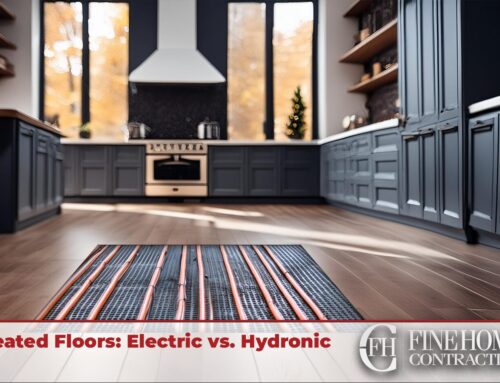September is National Preparedness Month, which serves as a reminder to be ready for any emergency. While you may be stocking up on bottled water and non-perishable foods, don’t overlook the key safety appliances that can protect your home and family year-round.
Install Smoke Detectors
Smoke detectors are essential for catching fires early and alerting everyone to evacuate. Place detectors on every level of the home and inside each bedroom. Test them monthly and replace batteries twice a year. Interconnected detectors provide the best coverage.
- Choose detectors with 10-year sealed batteries or hardwired models for easiest maintenance.
- Opt for photoelectric sensors over ionization for fewer false alarms from cooking smoke.
- Install smoke detectors high on walls or ceilings, at least 4 inches from corners.
- Never paint over a smoke detector as it can interfere with sensitivity.
- Replace smoke detectors every 8-10 years as sensor accuracy declines over time.
Detect Carbon Monoxide Leaks
Carbon monoxide is an odorless, invisible gas that can be deadly. Protect your home with CO detectors plugged in near bedrooms and on every level. Choose models with digital displays that show CO levels. Know the symptoms of CO poisoning like dizziness and confusion, as CO poisoning can be easy to miss.
- Look for ANSI/UL 2034 certification to ensure proper CO sensitivity.
- Choose a model with a digital display that shows actual CO levels, not just an alarm.
- Install CO detectors within 10 feet of each bedroom door and on every level.
- For the most coverage, install both battery-powered and plug-in CO detectors.
- Replace CO detectors every 5-7 years according to manufacturer guidelines.
Secure Homes with Alarm Systems
Alarm systems deter burglars and trigger alerts to contact authorities if there’s an intrusion. Monitored systems provide 24/7 professional monitoring, while DIY options utilize motion sensors and sirens. Ensure all entry points are covered and customize motion detector and camera placement.
- Compare professionally monitored, DIY, wifi-enabled, and smart home compatible systems to find the right fit.
- Place control panels in hidden, central areas and keypads near entry doors for convenient arming.
- Position motion detectors facing potential points of entry like doors and windows.
- Install audible alarms outdoors or facing windows to help deter intruders.
- Test your system monthly to ensure all devices connect and function properly.
Monitor for Water Leaks
Water sensors near hot water heaters, by sinks, under appliances, and in basements can detect leaks and prevent water damage. Special sensors can also turn off water valves when they detect floods. Consider smart options that send alerts to your phone when abnormal water flow is detected.
- Select wireless detectors for easiest retrofitting in existing homes without rewiring.
- Place water sensors near plumbing, appliances, and along basement floors and walls.
- Consider a whole home water shut-off valve to automatically stop water flow during leaks.
- Check that detectors contain long-life batteries or plug into an outlet for constant power.
- Test water sensors periodically by simulating leaks to confirm they detect water flow.
Take preventative steps and equip your home with these key safety appliances to protect your family this National Preparedness Month and year-round. Contact our team to install or inspect any of these essentials. Stay safe and stay prepared.







